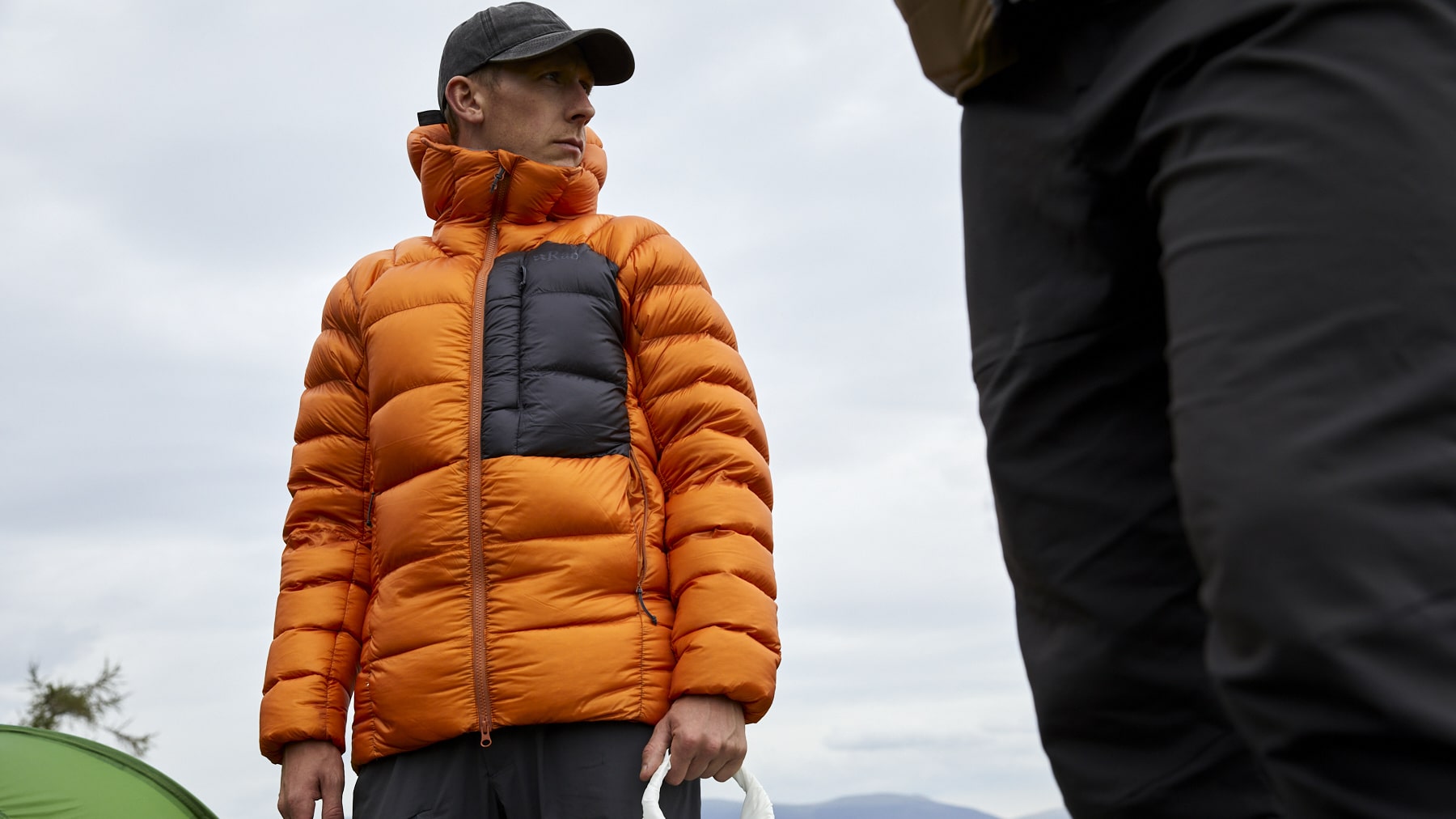You’re browsing men’s down jackets on sale, and you see two options: a 700-fill jacket for $150 and an 800-fill for $180.
Most people grab the 800-fill, thinking higher numbers mean more warmth. But here’s the catch—fill power alone doesn’t determine how warm a jacket actually is. You need to know how fill power and fill weight work together.
What Fill Power Actually Measures?
Fill power tells you about down quality, not quantity. It measures how much space one ounce of down can fill when you fluff it up. An 800-fill down expands to 800 cubic inches per ounce, while 700-fill expands to 700 cubic inches.
Here’s what this means for you: higher fill power = better insulation per ounce. The down traps more air in less weight. That’s why premium jackets advertise 800 or 900 fill power—the down is more efficient.
But efficiency isn’t everything when you’re standing in freezing weather.
Fill Weight: The Missing Piece You Need to Know
Fill weight is the actual amount of down stuffed into your jacket, measured in ounces or grams. This number rarely gets advertised, but it matters more than you think.
A jacket with 3 ounces of 700-fill down has 2,100 cubic inches of insulation (700 × 3). Another jacket with 2 ounces of 800-fill down gives you 1,600 cubic inches (800 × 2). The 700-fill jacket wins because it has more total insulation, even though the quality per ounce is lower.
This is why you can’t judge warmth by fill power alone.
How These Two Numbers Work Together?
Think of it like this: fill power is your car’s fuel efficiency (miles per gallon), and fill weight is your tank size. A car that gets 30 mpg with a 10-gallon tank goes 300 miles. A car that gets 40 mpg with a 6-gallon tank only goes 240 miles.
Same logic applies to down jackets. The total warmth comes from multiplying fill power by fill weight.
| Jacket | Fill Power | Fill Weight | Total Insulation |
| Jacket A | 700-fill | 4 oz | 2,800 cubic inches |
| Jacket B | 800-fill | 3 oz | 2,400 cubic inches |
| Jacket C | 900-fill | 2.5 oz | 2,250 cubic inches |
Jacket A keeps you warmest, even with the lowest fill power rating. The numbers don’t lie.
What This Means When You’re Shopping Sales?
During sales, retailers push high fill power jackets because they sound premium. You’ll see “800-fill down!” in big letters, but the fill weight gets buried in product specs or left out completely.
When you find a deal on down jackets, check both numbers. A heavily discounted 700-fill jacket with generous fill weight often beats a pricey 800-fill jacket with less down. You’re getting more insulation for less money.
Don’t let marketing trick you into paying more for less warmth.
When Higher Fill Power Actually Matters
There are times when you should prioritize fill power over fill weight:
Backpacking and travel: If you need to pack light, higher fill power gives you warmth without weight. An 850-fill jacket with 2 ounces provides decent warmth and compresses into a small stuff sack.
Layering: When you’re wearing the jacket under a shell or over multiple layers, you want something slim. Higher fill power with lower fill weight keeps you warm without bulk.
But for everyday winter wear? Fill weight matters more. You’re not counting grams, and a slightly heavier jacket won’t bother you.
The Real-World Temperature Test
Here’s something most people miss: jacket design affects warmth as much as the down itself. Baffles (the stitched sections that hold down in place) make a huge difference.
Two jackets with identical fill power and fill weight can perform differently based on:
- Baffle size: Larger baffles let down shift around. Smaller baffles keep it evenly distributed.
- Box-wall construction: Creates chambers that prevent cold spots.
- Down distribution: Some jackets put more down in the torso, less in the arms.
A well-designed 650-fill jacket can outperform a poorly constructed 800-fill jacket. Construction quality isn’t just about durability—it directly impacts warmth.
How to Compare Jackets the Right Way?
When you’re shopping, follow this process:
Look past the fill power headline and find the fill weight in the product specifications. Most brands list it as “down fill weight” or “insulation weight” somewhere in the details.
Calculate total insulation by multiplying the two numbers. Compare that across jackets in your price range.
Check the temperature rating if available. Some brands test their jackets and list the lowest comfortable temperature. This gives you real-world context instead of just raw numbers.
| Factor | Why It Matters |
| Fill Power × Fill Weight | Total insulation capacity |
| Baffle Construction | Even warmth distribution |
| Outer Fabric | Wind resistance and durability |
| Temperature Rating | Real-world performance data |
Getting the Best Value During Sales
Sales season is when you can score serious deals, but you need to know what you’re looking at. Retailers discount jackets for different reasons—end of season, overstock, or introducing new models.
The sweet spot: Look for 650-750 fill power jackets with high fill weight. These often get discounted because shoppers chase the 800+ fill power options. You end up with a warmer jacket at a lower price.
Read reviews that mention actual temperature performance. Numbers on a spec sheet don’t always match real-world experience.
If multiple people say a 700-fill jacket kept them warm at 10°F, that’s more valuable than theoretical calculations.

Your Final Takeaway
Next time you shop for down jackets, remember this: fill power measures quality, fill weight determines warmth.
A 700-fill jacket with more down beats an 800-fill jacket with less down.
Do the math, check the construction, and don’t let big fill power numbers distract you from what actually matters—staying warm when you need it most.
Frequently Asked Questions
Does higher fill power always mean a warmer jacket?
Answer: No. Fill power measures down quality, not total warmth. The total insulation depends on both fill power and fill weight. A 700-fill jacket with more down can be warmer than an 800-fill jacket with less down.
What is fill weight and why does it matter?
Answer: Fill weight is the actual amount of down in the jacket. More fill weight means more total insulation, which usually translates to more warmth, even if fill power is lower.
How do jacket construction and baffles affect warmth?
Answer: Baffle size, box-wall construction, and down distribution prevent cold spots and ensure even warmth. A well-constructed jacket can outperform a higher fill power jacket with poor design.
How should I compare jackets when shopping sales?
Answer: Look at both fill power and fill weight. Multiply them to estimate total insulation, check temperature ratings, and read reviews for real-world performance. Don’t rely solely on high fill power numbers.
When does higher fill power matter more than fill weight?
Answer: For backpacking, travel, or layering, where weight and packability matter, higher fill power is useful. For everyday winter wear, fill weight usually matters more.

